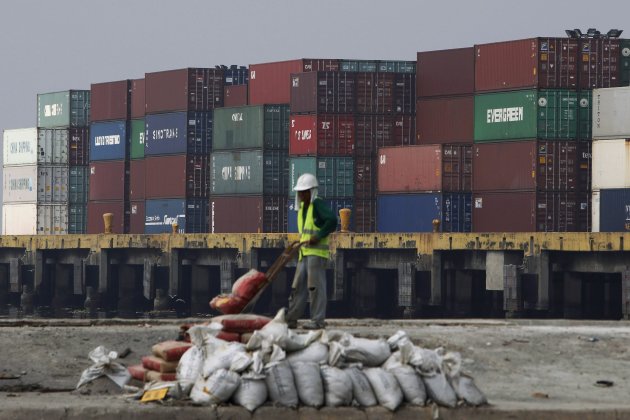
The country exported a total of $4.8 billion worth of merchandise in September, 22.8 percent higher than the $3.9 billion shipped out in the same month in 2011, official government data showed.
This makes the Philippines the "strongest performer among its East and Southeast Asian neighbors for the period," the National Economic and Development Authority said in a statement.
Among the economies whose exports expansion figures have been topped by the Philippines are Hong Kong (15.8 percent), Vietnam (15.6 percent), Taiwan (10.4 percent), China (9.9 percent) and Thailand (0.2 percent).
"The strong export performance mainly reflected the moderate improvement in global economic activity as industrial production and business confidence indicators showed signs of recovery," NEDA Deputy Director-General Emmanuel Esguerra said in the statement.
In a separate statement, Trade Undersecretary Cristino Panlilio said: "The country’s merchandise exports growth momentum remains robust despite significant threat posed by the crisis in the Euro area and lethargic state of the U.S. economy."
"We have always aimed to make our export growth rate at par with our ASEAN neighbours to sustain the country's growth," he added.
Other countries, meanwhile, have posted drops in exports in September compared to a year ago.
Japan recorded the steepest decline at -11.8 percent, followed by Indonesia (-9.4 percent), Singapore (-4.8 percent) and the Republic of Korea (-2.0 percent).
In terms of exports from January to September, the Philippines is"only one of four East and Southeast Asian countries that posted positive growths in the first nine months of 2012," NEDA said.
Merchandise exported by the Philippines grew by 7.2 percent to $40.1 billion in the first three quarters from $37.4 billion in the same period last year, driven mostly be manufactured exports.
"Improved overall demand for the country's manufactured exports was mainly due to the generally favorable developments in global industrial production, with new orders further showing signs of expansion following persistent declines," Esguerra said.
Electronic exports also snapped a five-month decline since April even as it only grew by 1.1 percent to $1.83 billion in September.
"The nearly flat performance of electronics shipments was due to the drag coming from electronic data processing units amid renewed strengths in other electronics sub-segments such as telecommunication, which was projected to surpass computers as one of the leading market drivers," Esguerra said.
Japan was the top destination of Philippine exports in September, with a 30.8-percent share of total outbound shipments.
It was followed by the U.S., (12.6 percent), China (11.1 percent), Hong Kong (7.5 percent) and Singapore (7.1 percent).
Bureau of Export Trade Promotion Director Senen Perlada, meanwhile, said: "[W]e are optimistic to accomplish our targets to double our total exports to $100 billion by 2016 with the current development in Philippine export growth."
This, even as he noted that exports have been "previously growing at a slower rate because of weak demand especially in our large consumer market..."-Yahoo News Philippines (November 13, 2012 5:00PM)

No comments:
Post a Comment